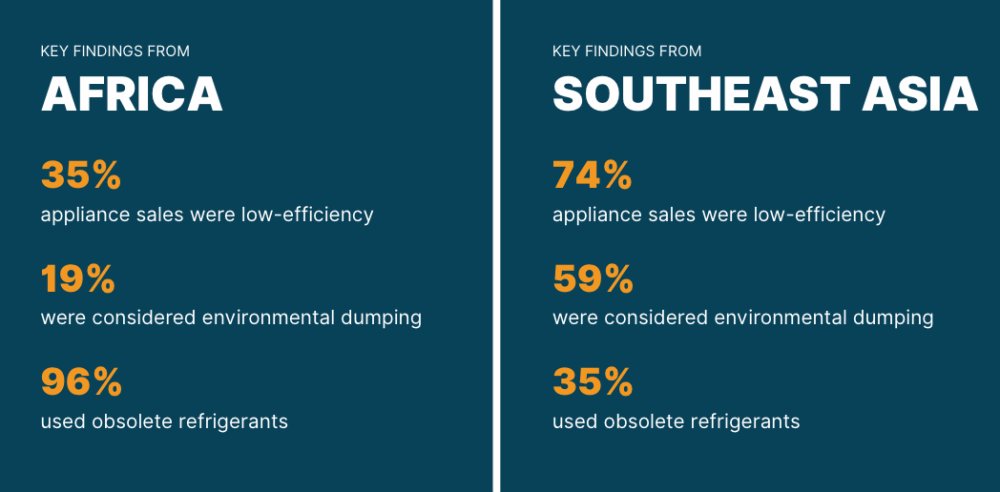Low-efficiency, high-global-warming potential (GWP) room air conditioners are widespread across the Global South due to environmental dumping, according to a research series by CLASP and the Institute for Governance & Sustainable Development (IGSD). The practice involves exporting appliances that fail to meet efficiency or refrigerant standards in their country of manufacture to regions with weaker or no such regulations.
Previous studies conducted in Africa (2020) and Southeast Asia (2023) confirmed the prevalence of low-efficiency, high-GWP room air conditioners in these markets. This trend increases electricity costs for consumers, strains national power grids, and hinders progress toward climate targets.
The issue is increasingly critical as global demand for cooling rises. While air conditioner ownership is expected to grow from 1.6 billion units in 2023 to 5.6 billion by 2050, only 15% of the 3.5 billion people living in hot climates currently have access to cooling. Affordability remains a key barrier.
Environmental dumping contributes to higher operating costs, increased emissions, and long-term energy dependence. The study recommends national policies on appliance efficiency and refrigerant regulations to support the adoption of next-generation, climate-friendly technologies.
To further explore the issue, CLASP and IGSD are working with the Climate & Clean Air Coalition (CCAC) and the United Nations Environment Programme (UNEP) on new research in Latin America and the Caribbean. The project aims to quantify environmental dumping in the region and examine its effects on affordability and access, especially for women and low-income households.
